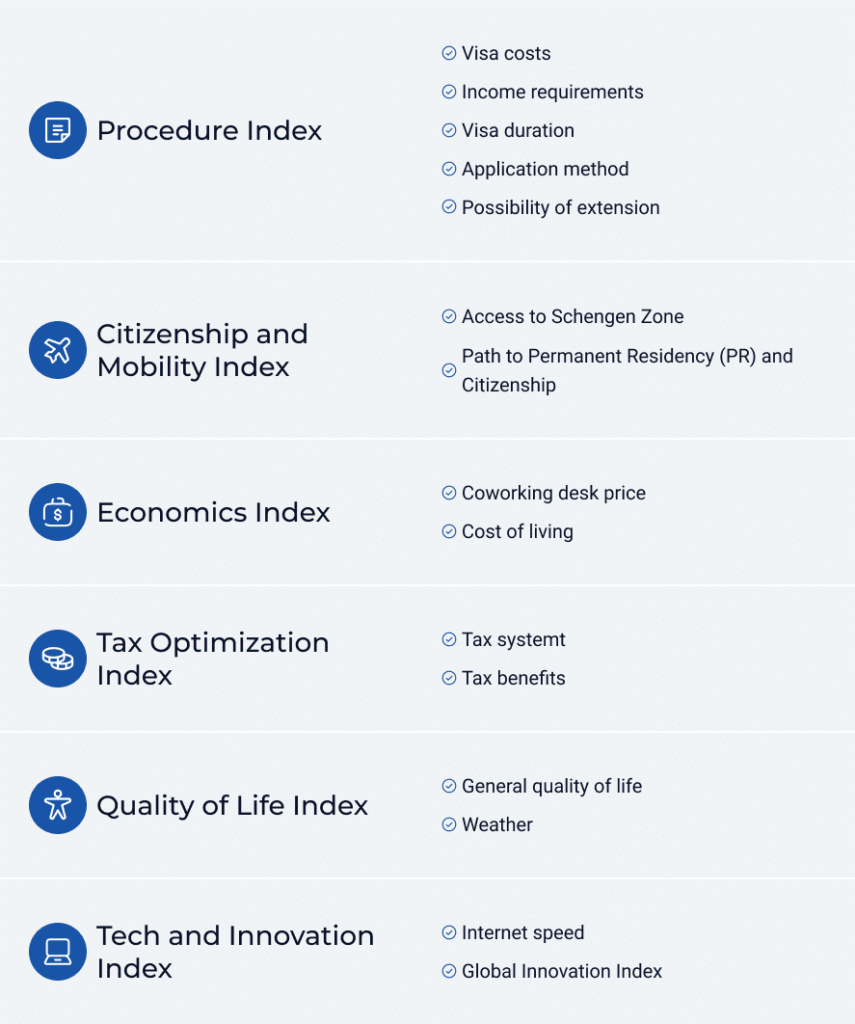Digital nomadism, a term first popularized in the late 1990s, describes a lifestyle where individuals harness digital technologies to work remotely while traveling or residing in various locations. Over the past two decades, the growing availability of high-speed internet, mobile technologies, and the normalization of remote work have transformed this once niche concept into a global movement. Its roots can be traced back to the broader telecommuting trends of the 1970s, but it was the digital revolution, and more recently, the pandemic, that propelled it into the mainstream.
The COVID-19 pandemic in 2020 was a turning point. Virtually overnight, remote work shifted from an option to a necessity. Companies and employees adapted quickly, developing new ways to maintain productivity from home. Soon after, many discovered the freedom to work from anywhere in the world. This realization inspired a wave of lifestyle changes, professionals choosing locations that offered improved quality of life, lower costs, and unique cultural experiences. Recognizing this shift, governments began crafting digital-nomad-friendly regulations. From 2020 onwards, countries have introduced tailored visas and residency frameworks, offering legal clarity for both workers and employers.
While data on digital nomads remains limited (particularly within the EU) their growing economic footprint is undeniable. Communities are increasingly aware of the value digital nomads bring: diversifying local economies, supporting small businesses, and enriching cultural exchange. This awareness is spurring nations from the Caribbean to Eastern Europe to invest in infrastructure and policy measures that attract and support this global workforce.
In 2024, Global Citizen Solutions published its first Global Digital Nomad Report, which reached a worldwide audience. This pioneering edition mapped the availability of digital nomad visas and outlined their key features, providing unprecedented clarity for both policymakers and prospective nomads. In 2025, we refined the definition of digital nomadism, conducted a deeper analysis of regulatory frameworks, expanded our index with additional indicators, and included new visa programs, ensuring the report remains the most up-to-date and comprehensive resource available.
The Global Digital Nomad Report responds to this rising phenomenon by presenting a comprehensive 64-country index highlighting the most accommodating destinations for international digital nomads. Our focus is on the cross-border dimension of this lifestyle, where the opportunities are vast but the challenges, navigating immigration laws, tax systems, and cultural adaptation, are equally significant.
The Global Digital Nomad Index is built on 15 carefully selected indicators grouped into five thematic sub-indices: Procedure, Citizenship and Mobility, Tax Optimisation, Economics, Quality of Life, and Tech & Innovation. Weightings for each indicator were assigned based on relevance to nomads’ decision-making, drawing from academic research, industry expertise, and publicly available data.
From Global Citizen Solutions, we envisage this report as both a practical tool and an inspiration, guiding digital nomads in making informed decisions about where to live and work, helping policymakers design smarter regulations, and encouraging communities to embrace the opportunities this mobile workforce brings. Above all, we believe it will sparks conversations about the future of work, mobility, and global citizenship in a way that empowers individuals and strengthens connections across borders.
Patricia Casaburi,
CEO at Global Citizen Solutions
What this report is:
The 2025 Global Digital Nomad Report maps the world’s most accommodating destinations for international digital nomads through a 64-country index. It refines definitions, expands indicators, and incorporates new visa programs to capture how remote work, mobility, and policy have evolved since 2020.
Why it matters:
Digital nomadism has moved from subculture to mainstream policy. Governments now compete for globally mobile earners with tailored visas, while cities and regions look to convert longer stays into year-round demand, knowledge spillovers, and firm creation. The report positions nomads as FDI-adjacent contributors—carriers of foreign income, skills, and entrepreneurship, when programs align visas with taxation, residency, and ecosystem development.
Key Findings
- Scale & Momentum
- 91% of tracked nomad/remote-worker visas were launched after 2020, evidencing a rapid, post-pandemic policy wave.
- The index evaluates 64 countries across 15 indicators in six dimensions: Procedure, Citizenship & Mobility, Tax Optimisation, Economics, Quality of Life, Tech & Innovation.
- Who Nomads Are (2025 snapshot)
- Affluent profile: 79% earn >$50k; average salary ~$124,416.
- Strong “passport effect”: nationals from high-mobility countries dominate; weaker passports face layered barriers and use second citizenship as a mobility hedge.
- “Slomadism” (longer stays) is rising, often aligned with residency/citizenship goals.
- Visa Design & Access
- Duration: The 1-year visa is the global standard (~66%), and 76.6% of programs are renewable. Top long-horizon options include Taiwan (3-year extendable) and 2-year extendables (e.g., Colombia, Ecuador, El Salvador, Norway, Cayman Islands, Montenegro).
- Eligibility: 58% of programs are open to any nationality; 23% target non-EU/EEA/Swiss; 16% restrict to specific passports; 3% filter by profession.
- Citizenship Pathways: Only 3 countries link DNVs directly to citizenship (Czechia, Greece, Spain). 14 allow conversion to PR (e.g., Portugal, Italy, Germany, Netherlands, Norway, Canada, Brazil, Mexico, Ecuador, El Salvador, Uruguay). Most others remain temporary.
- Tax Regimes & Compliance
- Distribution across 64 jurisdictions: Worldwide taxation 53%, Zero-tax 20%, Territorial 17%, Hybrid w/ DN benefits 6%, Remittance-basis 3%.
- Targeted concessions (e.g., Spain’s impatriate regime, Indonesia’s four-year foreign-income relief, Ireland’s remittance rules) materially shift attractiveness.
- Economics & Markets
- Cost bands split into runway (low CoL + affordable desks), mid-cost balance, and premium hubs.
- Ecosystem growth: coworking and flexible office markets are expanding at mid-teens CAGR; co-living is scaling; allied sectors (extended-stay, eSIM/connectivity, cross-border fintech, relocation/visa services) are professionalizing.
- Regional Landscape
- Europe: Strongest for integration (PR/citizenship pathways; Schengen mobility) but higher costs/taxes.
- Americas: Lifestyle and tax clarity in parts of LATAM/Caribbean; range from short-stay lifestyle products to pragmatic PR routes (e.g., Uruguay, Ecuador).
- Asia: Elite infrastructure but selective access and limited permanence in many programs.
- Africa: Affordable entry points (e.g., Mauritius, Namibia, South Africa) with infrastructure gaps.
- Oceania: Australia is the lone regional pillar—premium quality, higher costs.
Policy Playbook (What Works)
- Digital-first procedures with predictable timelines; mid-range income thresholds/fees aligned to market reality.
- Limited local-client allowances (e.g., Spain’s 20%) to ease professional embedding without displacing local labor.
- Tax clarity: publish plain-language guidance; consider expatriate regimes/remittance or territorial elements to reduce compliance anxiety.
- Pathways to permanence: credible extensions, PR/citizenship tracks to convert spending into firm formation and longer-term tax contributions.
- Geographic diversification: steer inflows to secondary cities; co-invest in broadband, coworking, and housingto avoid overheating capitals.
- Community integration: language/onboarding, links to universities/SMEs, and civic programs to maximize knowledge spillovers.
Bottom line:
Digital nomadism is now a strategic lever for talent attraction, innovation, and place-based development. Jurisdictions that pair clean rules and tax clarity with real integration pathways, infrastructure investment, and community linkages will win sustained, high-value participation from globally mobile professionals.
The Global Digital Nomad Report presents a comprehensive 64-country index highlighting the most accommodating destinations for international digital nomads. The ranking is designed to provide a comprehensive, data-driven evaluation of the best jurisdictions for digital nomads worldwide. It combines quantitative and qualitative factors that influence the decision-making process of mobile professionals, presenting them in a structured and comparable format.
The final index is built around six main dimensions – Procedure, Citizenship and Mobility, Tax Optimisation, Economics, Quality of Life, and Tech & Innovation – each composed of carefully selected indicators relevant to the digital nomad lifestyle. The selection of indicators was informed by academic research, industry surveys, experts analisys and insights from our client base, ensuring that the index reflects real-world priorities and challenges faced by nomads.

We welcome journalists and content creators to use insights from Global Citizen Solutions in your articles and publications. Please credit Global Citizen Solutions as the source and include a link to our website so readers can explore our research, data, and global mobility tools in more detail.
The Conceptualisation of Digital Nomadism Before and After the Pandemic
Before the COVID-19 pandemic, digital nomadism was primarily conceptualised as a niche lifestyle pursued by a relatively homogenous group, predominantly freelance professionals in technology, design, marketing, and other location-independent sectors. Early research, such as Reichenberger (2018), portrayed these individuals as self-employed, highly mobile workers who leveraged digital tools to combine travel with income generation.1 Previous to the pandemic, only about 7 percent of U.S. workers worked, in July 2020, 42 percent of American workers reported working from home full-time.2 That global shift was not temporary. Instead, it cemented remote work as a fixture of modern employment. By 2025, in the United States, about 22% of the workforce continues to work remotely, representing 32.6 million Americans. This is particularly relevant because remote work, supported by technology and global mobility, is one of the primary enablers of digital nomadism…

